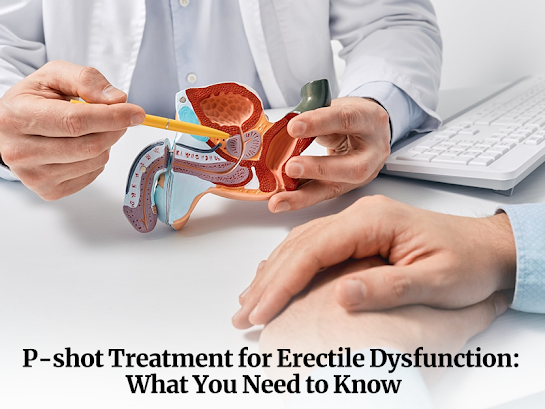P-shot Treatment for Erectile Dysfunction: What You Need to Know
What is the P-shot?
The P-shot involves using platelet-rich plasma (PRP) extracted from your own blood to rejuvenate and stimulate tissue growth in the penis. PRP contains growth factors as well as proteins that are believed to promote tissue repair and regeneration. The treatment aims to improve blood flow, sensitivity and overall function of the penis.
How is the P-shot administered?
The procedure begins with a small amount of blood being drawn from the patient, usually from the arm. The blood is then processed in a centrifuge to separate the PRP from other components. Once the PRP is prepared, it is injected into certain areas of the penis using a fine needle. Local anaesthesia or numbing cream might be applied to minimize discomfort during the injections.
Benefits of the P-shot
Improved Erectile Function: The growth factors in PRP are thought to improve blood flow to the penis, potentially improving erectile function and the quality of erections.
Increased Sensitivity: Some patients report increased sensitivity and improved sensation, which can enhance sexual pleasure.
Non-surgical and Non-invasive: Unlike surgical treatments for ED, the P-shot treatment does not require incisions or downtime, says the best plastic surgeon in Kolkata.
Natural and Safe: Since PRP is derived from the patient’s own blood, there is zero risk of allergic reactions or adverse effects.
What to Expect After Treatment
After receiving the P-shot, patients may experience mild swelling or discomfort at the injection site, which usually resolves within a few days. Results vary among individuals, with some noticing improvements in erectile function within a few weeks after treatment.
Considerations
While the P-shot shows promise as a treatment for ED, it may not be ideal for everyone. It is important to consult with a qualified plastic surgeon to determine candidacy and discuss expected outcomes. Additionally, the P-shot is often used as part of a comprehensive treatment plan for ED, which may include lifestyle changes, medications or other therapies.




Comments
Post a Comment